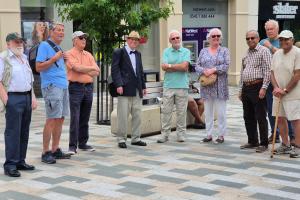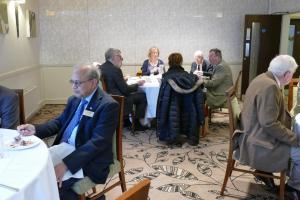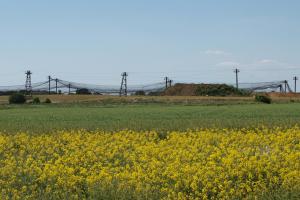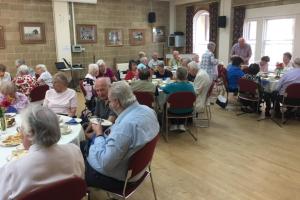Joint Clubs Dinner
Thu, Jan 30th 2025 at 6:30 pm - 9:00 pm
(At Little Channels.) Organised by our Club.
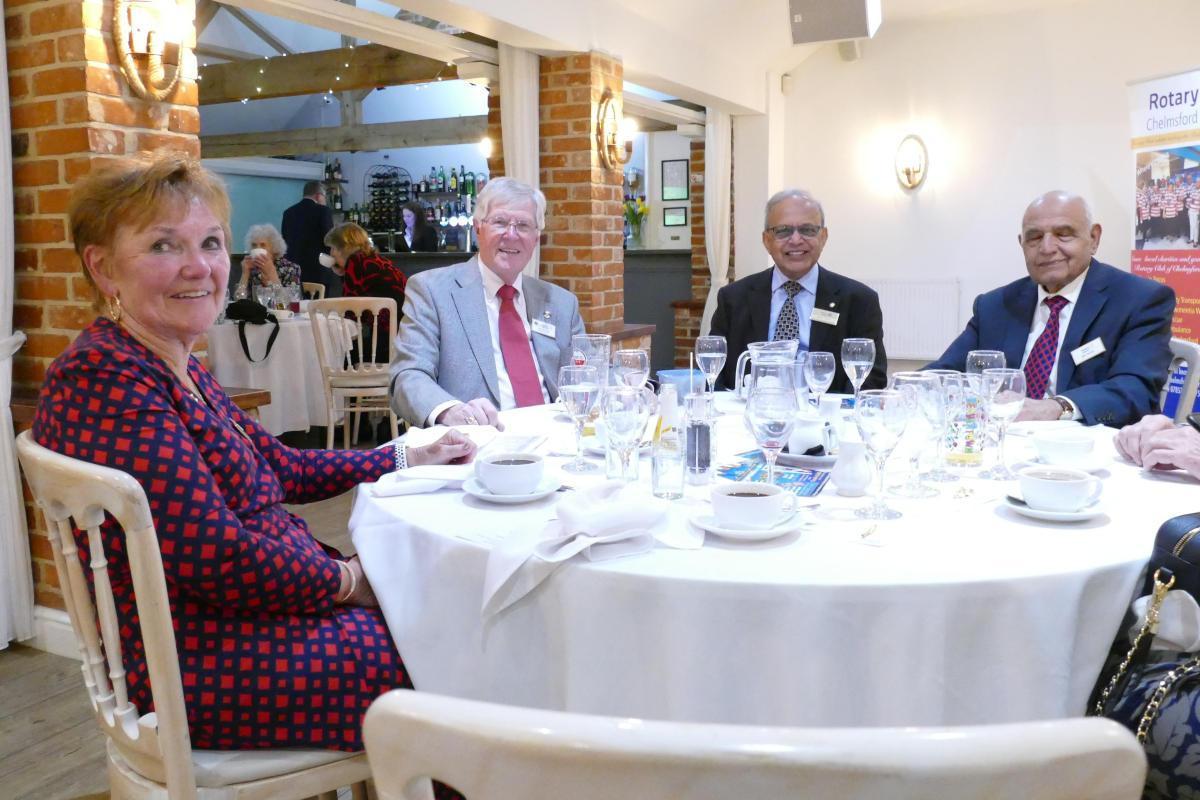
 Today it was our turn to host a joint dinner for Rotary Clubs in the Chelmsford area. Forty-seven people attended, including the speaker and his wife and the guests of Rotarians. Five Clubs were represented, four from Chelmsford itself plus the Rotary Club of Danbury & Villages. The dinner was held at Little Channels, which provided superb food.
Today it was our turn to host a joint dinner for Rotary Clubs in the Chelmsford area. Forty-seven people attended, including the speaker and his wife and the guests of Rotarians. Five Clubs were represented, four from Chelmsford itself plus the Rotary Club of Danbury & Villages. The dinner was held at Little Channels, which provided superb food.
The after dinner speaker was Chelmsford historian Alan Pamphilon, who spoke about the forgotten history of Chelmsford.
There is archaeological evidence of a settlement in what is now part of Chelmsford in the years BCE. Since Chelmsford stands on a river crossing on the way from London to the their local capital at Colchester, the Romans built a mansio in what is now Moulsham.
In Anglo-Saxon times the ford at Chelmsford was controlled by the local chieftain, Ceolmaer. Hence the name Chelmsford - Ceolmaer’s Ford. That name even appears on some of the old maps Alan showed us.
In Norman times Chelmsford was granted a charter to hold a market. The market area was immediately in front of the Shire Hall, alhtough that did not exist at the time. It was a roughly triangular shape, with stalls on both side and down the middle. Eventually the stalls in the middle were replaced by buildings, giving the top of the High Street its now familiar shape.
The original of Chelmsford’s famous Stone Bridge replaced an earlier wooden structure. It has seen some changes over the years, the original having three arches instead of the current one. During the building of the Parkway in the last century it was discovered that the Stone Bridge had no foundations!
In the eighteenth century Dr Benjamin Pugh lived in Chelmsford and was noted for his service to midwifery, inventing large forceps for use during a difficult birth and introducing the resuscitation of babies who did not start breathing after birth. He was also a strong advocate of vaccinating against smallpox. His house in the High Street still stands, although only the first and second floors have been left unchanged.
The Mildmays are another prominent local family, having an association with Chelmsford that goes back to the sixteenth century when Thomas Mildmay acquired the old Manor of Moulsham. The family owned a lot of land in the area, including some in the centre of Chelmsford. When the railway was built in the 19th century Chelmsford stations was built on Mildmay land. It’s thanks to that that Chelmsford Station is in the centre of town rather than on the outskirts.
One person who actively disliked Chelmsford was Charles Dickens. As a young reporter he stayed at the long-disappeared Black Boy Inn not far from the Stone Bridge. He wrote a letter to a friend that was most disparaging about the town.
Early in the 20th century Chelmsford changed from an agricultural town to an industrial one. Marconis and Hoffmans both had their factories here. Following their closure towards the end of the last century, it has become more of a commuter town.
'What We Do' Main Pages:


